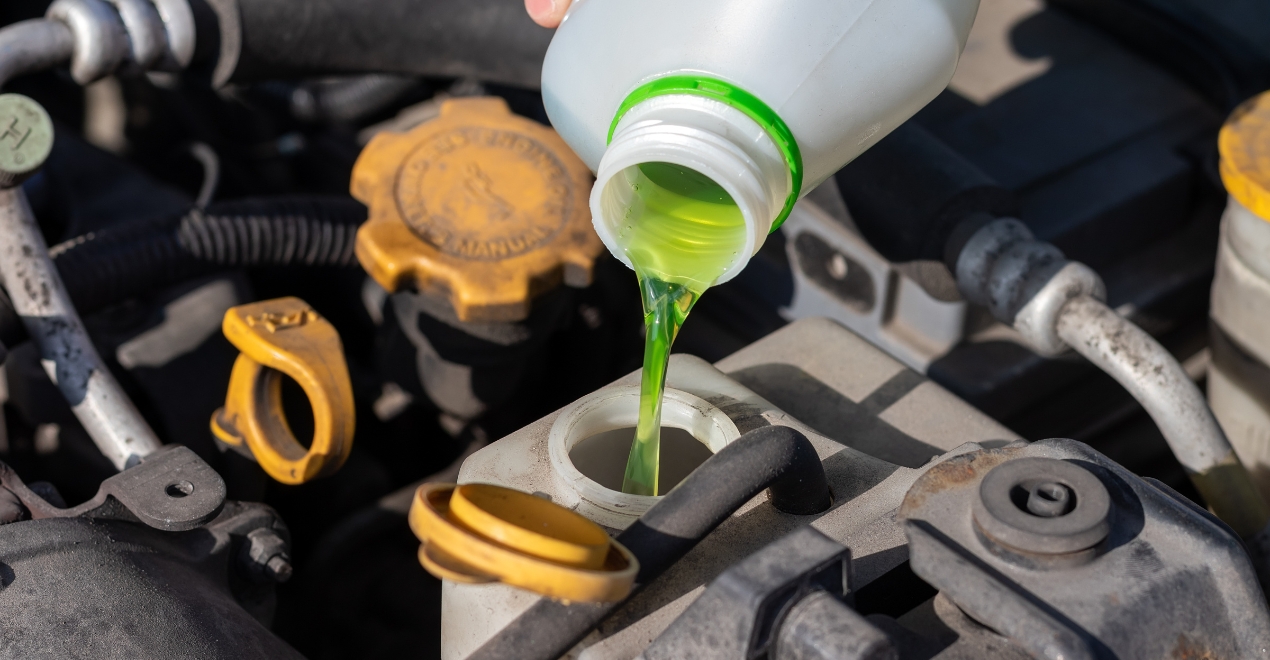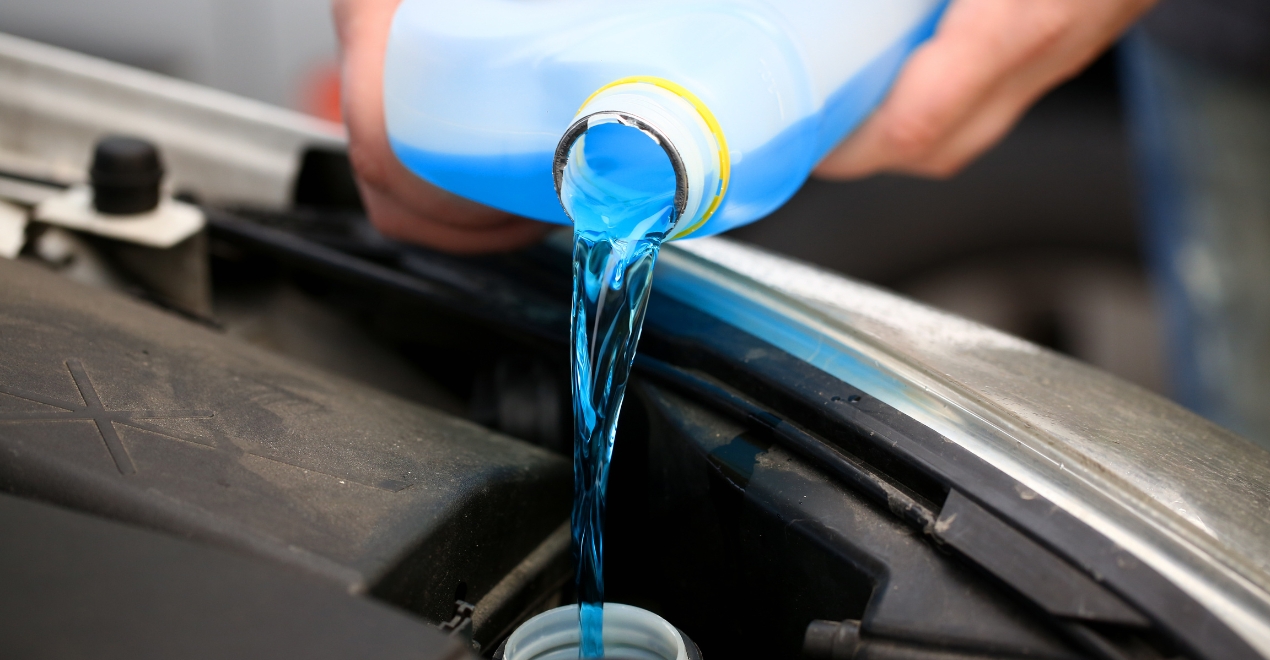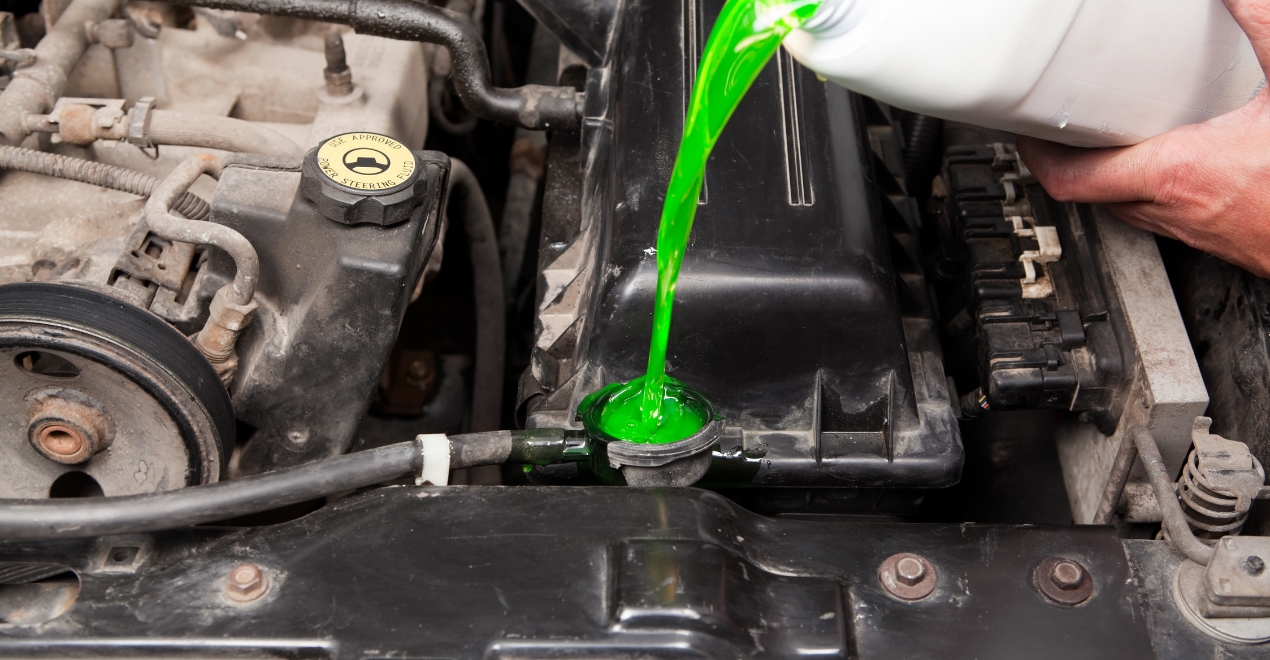Antifreeze is a crucial fluid in the operation of vehicles, especially in extreme temperatures. It ensures that engines run smoothly by regulating the temperature, preventing freezing in cold climates and overheating in warm conditions. This article delves into the five key ingredients in antifreeze and their essential functions, providing a comprehensive understanding of how they contribute to the overall performance and safety of a vehicle. Ready to safeguard your engine against freezing temperatures? Learn about the crucial components of antifreeze and ensure your car’s performance with Crossroads Helpline for instant repair assistance!
Ethylene Glycol: The Primary Heat Transfer Agent

Ethylene glycol is the cornerstone of most antifreeze formulations. This organic compound is a colorless, odorless, and viscous liquid that plays a critical role in preventing engine overheating and freezing. Its primary function is to serve as a heat transfer agent. By lowering the freezing point and raising the boiling point of the coolant mixture, ethylene glycol ensures that the engine operates within the optimal temperature range.
One of the unique properties of ethylene glycol is its ability to mix with water in various proportions without separating, which is vital for maintaining consistent engine performance. The mixture typically contains about 50% ethylene glycol and 50% water, although this ratio can vary depending on the specific requirements of the vehicle and the climate conditions. This combination provides effective thermal management by circulating through the engine’s cooling system, absorbing excess heat, and dissipating it through the radiator.
Additionally, ethylene glycol acts as a protective barrier against corrosion, which is essential for preserving the integrity of the engine’s metallic components. Over time, metal parts can corrode due to the constant exposure to water and high temperatures. Ethylene glycol helps mitigate this risk by forming a thin, protective layer on the metal surfaces, thereby extending the lifespan of the engine.
However, it’s important to note that ethylene glycol is highly toxic. Ingesting even small amounts can be fatal to humans and animals, making it imperative to handle antifreeze with care and dispose of it properly. Despite its toxicity, ethylene glycol remains the preferred choice for antifreeze due to its superior heat transfer capabilities and corrosion protection properties.
Propylene Glycol: The Safer Alternative

Propylene glycol is another key ingredient in antifreeze, often used as a safer alternative to ethylene glycol. Unlike ethylene glycol, propylene glycol is less toxic and is commonly found in food, pharmaceuticals, and cosmetic products. Its lower toxicity makes it a popular choice for use in environments where accidental ingestion might be a concern, such as in households with pets and children.
Functionally, propylene glycol shares many similarities with ethylene glycol. It serves as an effective heat transfer agent, helping to regulate the engine temperature by lowering the freezing point and raising the boiling point of the coolant mixture. This ensures that the engine remains operational in both extreme cold and hot conditions, much like ethylene glycol-based antifreeze.
The chemical properties of propylene glycol also contribute to its ability to prevent corrosion. When mixed with water, it creates a solution that can flow through the engine’s cooling system, providing both thermal management and protective qualities. It forms a protective layer on the metal surfaces within the engine, reducing the risk of rust and corrosion that can degrade engine components over time.
One significant advantage of propylene glycol is its environmental friendliness compared to ethylene glycol. While both compounds can be harmful to the environment if not disposed of properly, propylene glycol is biodegradable, reducing its environmental impact. This makes it a more sustainable option for antifreeze, particularly in applications where ecological considerations are a priority.
Despite these benefits, propylene glycol-based antifreeze may not perform as well as ethylene glycol in extremely low temperatures. This limitation means that it might not be suitable for all climates or all types of vehicles. However, for many users, especially those concerned with safety and environmental impact, propylene glycol offers a viable and effective alternative for engine cooling and protection.
Water: The Universal Solvent
Water is a fundamental component of antifreeze, acting as the universal solvent that facilitates the mixture and effectiveness of other ingredients. In most antifreeze formulations, water constitutes about 50% of the total volume, although this ratio can vary depending on the specific needs of the vehicle and the environmental conditions it operates in.
The primary function of water in antifreeze is to aid in heat transfer. Water has a high specific heat capacity, meaning it can absorb and retain a significant amount of heat. When mixed with ethylene glycol or propylene glycol, water enhances the solution’s ability to manage the engine’s temperature by absorbing heat from the engine and dissipating it through the radiator. This process is crucial for preventing the engine from overheating, which can lead to severe damage and reduced efficiency.
In addition to its heat transfer capabilities, water also plays a role in ensuring the proper flow and circulation of the coolant mixture. Its fluidity allows the antifreeze to move through the engine’s cooling system efficiently, reaching all necessary components and providing uniform temperature regulation. This ensures that the entire engine is protected from temperature extremes, rather than just specific parts.
Another important function of water in antifreeze is its contribution to the prevention of freezing. When combined with glycol-based compounds, water helps lower the freezing point of the solution, ensuring that the coolant remains liquid even in extremely cold conditions. This is vital for maintaining the functionality of the engine in winter months, as frozen coolant can block the cooling system and cause significant damage.
However, the use of water in antifreeze also requires careful management of its quality. Impurities in water, such as minerals and contaminants, can cause scaling and corrosion within the engine. Therefore, it is essential to use distilled or deionized water in antifreeze formulations to prevent these issues and ensure the long-term effectiveness and safety of the cooling system.
Inhibitors: Protecting Against Corrosion and Wear

Inhibitors are a crucial component of antifreeze, providing essential protection against corrosion and wear in the engine’s cooling system. These chemical additives are specifically designed to prevent the degradation of metal surfaces, which can occur due to constant exposure to water, heat, and various chemical reactions.
The primary function of inhibitors is to form a protective barrier on the metal surfaces within the engine and cooling system. This barrier prevents the interaction of water and oxygen with the metal, which can lead to rust and corrosion. Different types of inhibitors are used to protect various metals commonly found in engines, including aluminum, steel, and copper. These inhibitors are typically categorized into organic and inorganic types, each with its specific advantages and applications.
Organic inhibitors, such as carboxylates, are often used in modern antifreeze formulations due to their long-lasting protection and compatibility with a wide range of metals. They work by forming a stable film on the metal surfaces, which remains effective over extended periods and varying temperatures. This type of inhibitor is particularly beneficial for vehicles with aluminum engines, as it provides robust protection without the need for frequent replacement.
Inorganic inhibitors, such as silicates, phosphates, and nitrates, have been traditionally used in antifreeze. These compounds are effective at preventing corrosion but may require more frequent maintenance and replacement compared to organic inhibitors. Silicates, for example, provide rapid protection but can deplete over time, necessitating periodic replenishment of the antifreeze solution to maintain optimal performance.
Inhibitors also play a role in preventing cavitation, a phenomenon where vapor bubbles form in the cooling system due to rapid changes in pressure and temperature. Cavitation can cause significant damage to metal surfaces, leading to pitting and erosion. By stabilizing the coolant mixture and preventing bubble formation, inhibitors help maintain the integrity and efficiency of the engine’s cooling system.
Conclusion
Overall, inhibitors are essential for ensuring the longevity and reliability of an engine. They protect against the corrosive effects of water and other chemicals, reduce the risk of wear and tear on metal components, and enhance the overall performance of the antifreeze solution. Regular maintenance and monitoring of the inhibitor levels in antifreeze are necessary to ensure continued protection and optimal engine performance. Discover the vital elements that keep your engine running smoothly, and remember, for quick fixes and reliable service, trust Crossroads Helpline for all your automotive needs.

